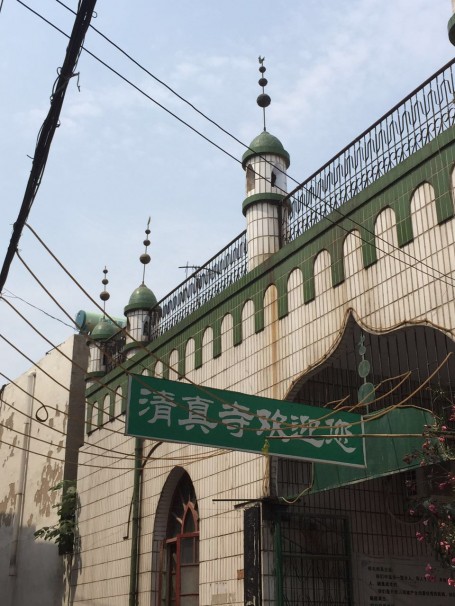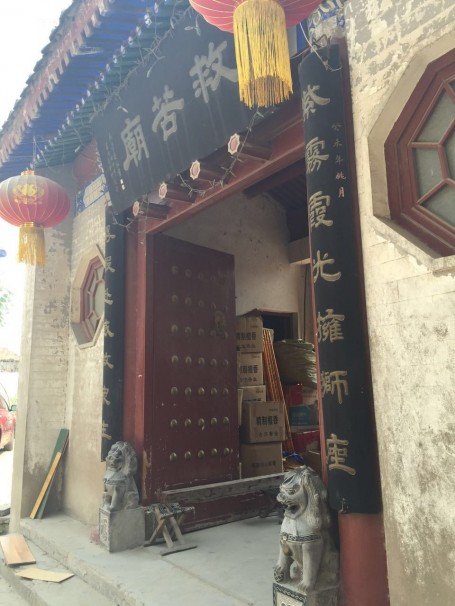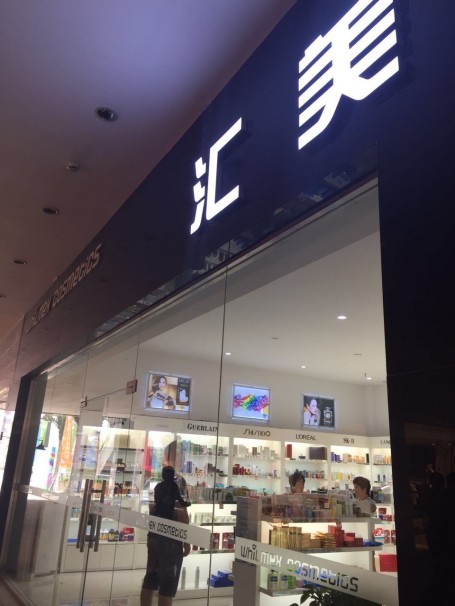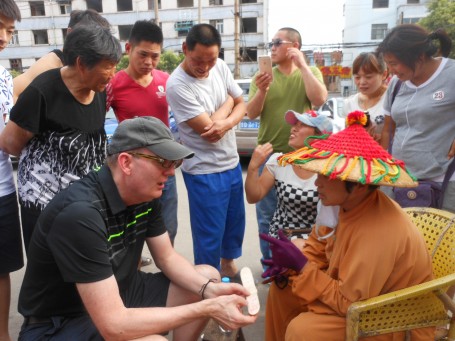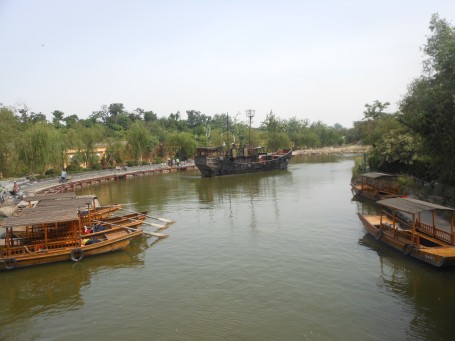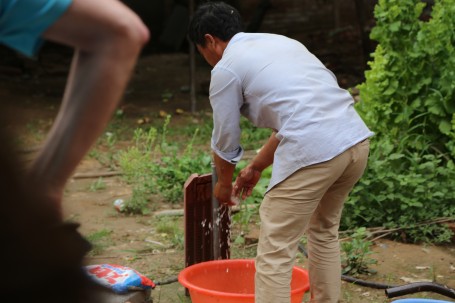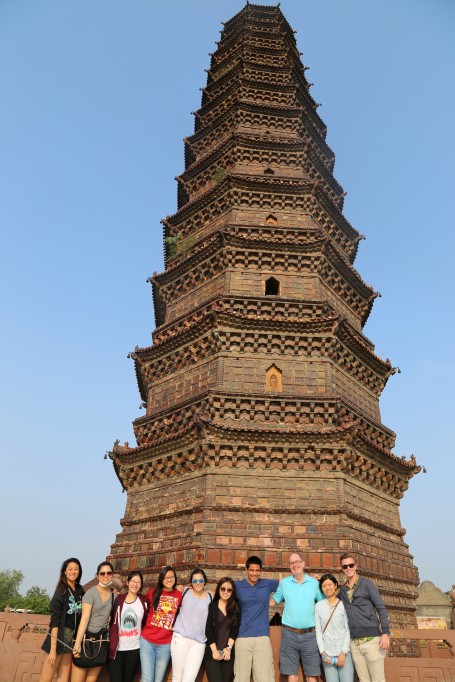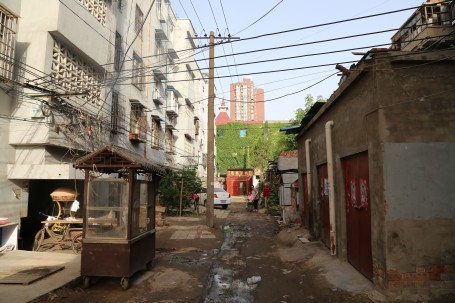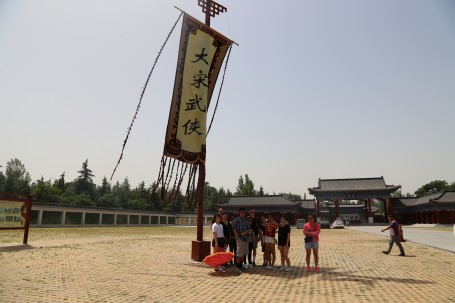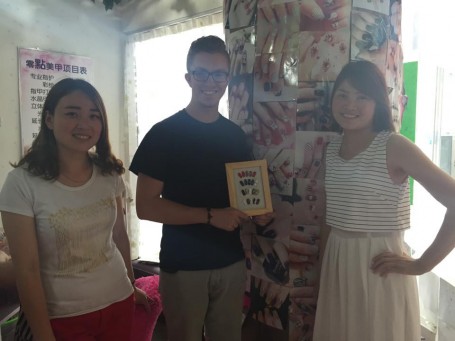By: Ashley Szydel, Phoebe Yin, and Megan Lee
We began our day visiting the Men’s and Women’s Muslim Mosques in Kaifeng. The followers of this religion in the Kaifeng community are referred to as a minority group called Hui Zu. Professor Sheehan expressed his excitement as even the tour guides had trouble finding the hidden locations of the mosques. Though our visit to each mosque was rather quick, we were able to see the areas in which the prayer practices occur and the remaining interior of the mosques. In the men’s mosque we were not permitted to step inside the prayer area, but were able to observe from the outside windows. At the women’s mosque, the rules were a bit more lenient and we were granted permission to remove our shoes and enter the prayer area. The experience was a very interesting one, as we had learned about the Muslim community’s presence in Kaifeng in previous readings during class back in Los Angeles. It was definitely a memory that will be taken with us as we continue on our journey through China.
After the marvelous trip to the men and women’s Muslim Mosques which gave us a glimpse of the mysterious Muslim world, we then proceeded further on our religious quest, which led us to Jiuku Temple or Jiuku Miao. Jiuku in Chinese means salvation from bitterness. The temple itself houses iconic local gods in which people would come to worship and ask for help. There’s an interesting intertwining between the representation of folk religion and Confucianism’s filial piety that we discovered inside the temple.
Most of us got our fortune telling stick at the place and allowed a peak into the near possible future. Both the mosques and the temple are located in remote and distant places that tell the story of Kaifeng’s religious tolerance and its once glorious past as the capital of the Song Dynasty. Later during the day, we had our last lunch in Kaifeng. Here are a couple of pictures; hopefully you don’t get too hungry!
To seize every opportunity we have to work on our final projects, three groups split up and went to their own designated places. As for us, we came to the newest, the best and the chic-est mall in Kaifeng for research on our cosmetic topic. With lack of international brands in this second/third tier city in China, we were surprised to find a store called Whilmex Cosmetic that is home to many luxury skincare brands. The store owner was really friendly, welcoming and easygoing like the rest of people we encountered in this lovely city, which made our departure seem even more saddening.
Later in the afternoon, a group of us went to Da Xiang Guo Si (Temple), which according to the hotel’s front desk staff is the most famous temple here in Kaifeng. There, Alice, Ashley, Chris, and John got their fortune’s read by an elderly woman who has been reading people’s fortunes for 27 years. Everyone fortunately received good fortunes and very much enjoyed the experience. Afterwards, close by to the temple we took a walk down a street full of local tent shops offering various stylish clothes, shoes, and many more accessories for purchase. Relatively cheap prices make the shopping fun and entertaining, especially when trying to negotiate prices with vendors. It also serves as a way to see what kind of items are particularly popular among the vendors and buyers, as there are often certain items that are repeated in each stall. Tonight, as we wrap up our final night in Kaifeng we regret that we are leaving after such a quick stay. The past four days have been just as enriching as we’d hoped they would be and have proven to be just as much fun as anywhere else. We head off to Shanghai at eight o’clock tomorrow morning, and should arrive late in the afternoon around six o’clock. Though Shanghai is our last leg of the trip, our adventures in Beijing and Kaifeng will not be easily forgotten! We hope to return one day to this beautiful city south of the Yellow River.

